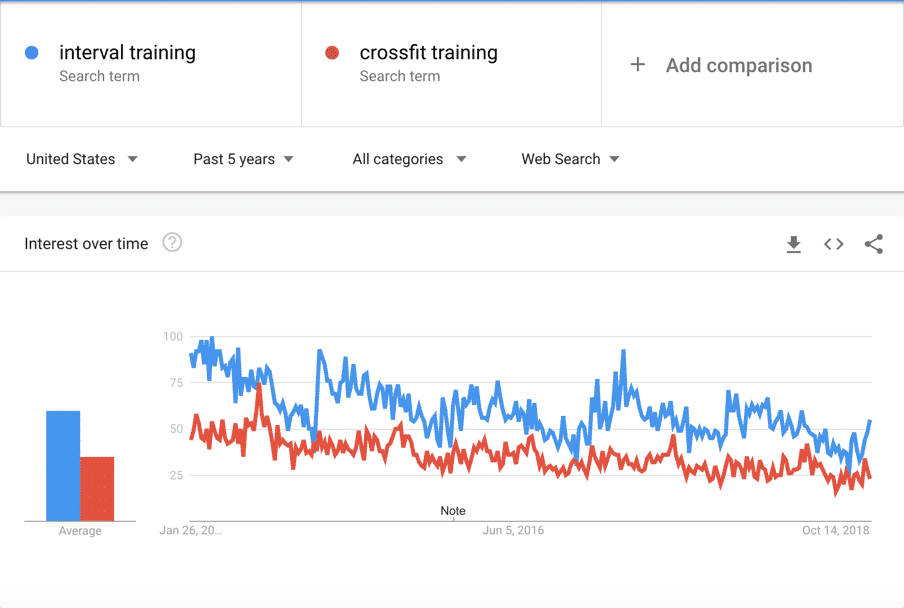Many people feel that SEO is a type of voodoo magic that can only be practiced by mythical wizards. SEO can get quite complex for large technical projects (such as ecommerce site migrations), but SEO is truly about improving your customer insight through understanding how they search. By understanding how customers are trying to find our brand we can design our website to perfectly serve our customer’s needs. Similar to how grocery stores place their top products on the ends of aisles we can put our top content in the best place to be found by curious consumers.
SEO strategy can be broken into three main areas:
- User insights
- Keywords
- Site content
We’ll dive in to each of these areas to help you understand how search effects all elements of your site through using great customer insight.
User Insights: understanding what your customer is ACTUALLY searching for
Google provides a variety of tools that we can use to better understand potential customers. Google Trends is one of the best tools in helping us understand when and how users are searching online.

Another great free tool is Answer the Public. Search has transformed over the past few years, moving from a simple process of typing a single keyword to relying to our devices to answer a huge variety of questions we have. Voice search is also playing a huge role in this and is projected to become the norm by 2020. Answer the Public makes it quick and easy to find questions surrounding a specified keyword. It also looks super cool.

Keywords: using the right description of your product.
It is rare that all potential customers have heard of your brand upon discovery. Unless your Coca Cola, many people are searching for a “non-branded keyword” when they come upon your website. A non-branded keyword is one that does not include your brand name, such as ‘Hotels in New York’ or ‘Where is the nearest gym?’ Finding non-branded keywords that are relevant to your business unlocks the ability to design your web experience with discoverability in mind.
An example: a brand team has been calling their workout plan “Intensitovia.” It’s very similar to high intensity training and crossfit, but has a few unique elements incorporated with the trainers. Although “Intensitovia” is a fun branding term, people don’t understand what the term means. Using the term on your site isn’t a problem, but it needs to be mixed with more popular keywords to gain traffic. Terms like “high intensity interval training” have around 18,000 searches/month (according to SEMRush), whereas very few non-customers are using the term Intensitovia.
Site content: building a sturdy foundation
SEO professionals use a variety of technical tricks to improve our content (such as proper canonicalization, link building and structured data); however, the absolute best way of increasing organic traffic is through creating high quality site content. When we understand the questions people are asking and the keywords they’re using we can craft a content strategy that continuously improves our site through strategic content creation. I call this “search-informed content creation.”
Using our keyword research to inform our site content creation allows us to be more deliberate in our content creation. We know what people are searching for and need to ensure we provide the best answer to this question.
How do we create a great webpage? This question is much simpler than it appears at first. Follow these steps to ensure your webpage is fully optimized.
- Use keyword research to inform your content creation
- Longform content is more effective than shorter pages. Make sure to thoroughly cover your topic.
- Bullet points and numbered lists are great for user experience, try to include when possible.
- Include content above-the-fold (ATF). ATF means that the content appears when a user first loads a web page before they scroll down.
- Naturally use your keywords in the content a few times. Do not “stuff” keywords; however, make sure you are using a few different versions of the keyword. An example: use “interval training,” “crossfit,” “intervals” and “high intensity” within an article to create a semantic web of keywords.
- Interlink to other web pages when possible. Make sure to add a link to any keywords that are related to other pages on your website. Regularly review your website for new opportunities.
- Add your chosen keyword to your headline (H1) and build meta data using your keyword.
- Review your content one last time for any spelling or grammar mistakes. Consider adding Grammarly to Chrome to review your articles on the fly.
- Publish your article.
There are a few additional steps we can take to ensure our content is being picked up by search engines; however, the above steps are the most important actions for improving organic traffic. Search engines need quality content to rank your website so creating great content should be on the forefront of every business’s mind!

